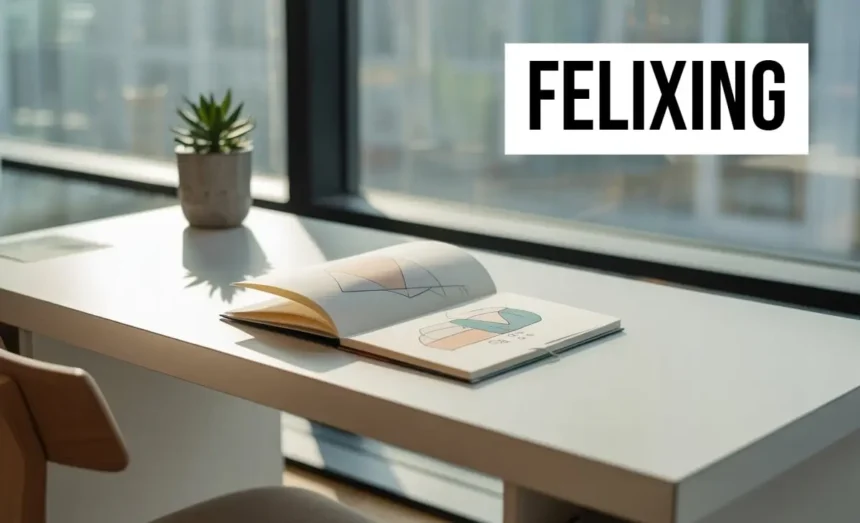In a world saturated with mass-produced goods, curated feeds, and digital noise, people increasingly crave something that feels authentic — a detail, a flourish, or a touch that says: this is mine. Enter Felixing, a rising concept that describes the act of refining, personalizing, or enhancing something — whether a project, a moment, or a routine — so it becomes uniquely yours. More than just a trend, Felixing reflects a broader cultural shift: the desire not just to exist, but to live with intention, style, and delight.
This article explores what Felixing is, how people are using it, and why it matters. We’ll look at its roots, practical applications, real-world examples, and how you can bring its energy into your life.
What Is Felixing and Why It’s Gaining Ground
Felixing isn’t a word you’ll find in traditional dictionaries — yet. But it’s growing fast in online conversation circles, creative industries, and among people who want more than standard. At its core, it means adding something that transforms the ordinary into memorable. It could be a subtle design choice, a ritual you perform daily, or the extra polish you give to work that makes people notice.
What makes Felixing appealing is its versatility. You can felix a photo by tweaking lighting; felix your workspace by arranging items with care; felix your social media presence through consistent style. It isn’t about perfection — rather, it’s about personality, intentionality, and small details that build up.
How People Practice Felixing
Here are some ways people commonly use Felixing to make a difference:
- In art and design: adding signature colors, motifs, or lighting that become your style.
- In home décor: repurposing items, mixing old and new, placing objects not just functionally but thoughtfully.
- In daily routines: rituals like journaling in a favorite mug, choosing playlists for mood, or arranging your morning coffee ritual just so.
These acts aren’t grandiose; they are gentle ways to make your life feel more yours.
Real-World Case Study
Consider a freelance graphic designer, Mira, who works in branding. Early in her career, she delivered clean, functional designs, but they often felt similar to many others. She began “felixing” her work: choosing a unique color accent, introducing hand-drawn icons as her signature, adding subtle texture background layers, and refining typography to match her aesthetic.
The impact was immediate. Clients started recognizing her style just by seeing her work before labels. Her social media engagement grew because people felt “something different” in her designs. She could command higher fees (because of recognizable quality), and projects started referring back to her because of her distinct style.
This case highlights that Felixing is not just for show — it adds real value, identity, and emotional resonance to work.
The Benefits and Challenges of Felixing
It can enrich life and work in many ways, but it also comes with potential pitfalls.
Benefits
- You stand out: your work or presence becomes memorable.
- You feel more connected: something you “touched” or curated feels personally owned.
- Greater satisfaction: small aesthetic or thoughtful flourishes bring joy.
- Builds identity: over time, your signature style or habits form part of how others recognize you.
Challenges
- Risk of overdoing: too many “signature touches” can feel repetitive or contrived.
- Time and resource cost: even small embellishments require extra effort.
- Balancing originality with usability: a flourish that looks good may reduce clarity or functionality if not well-thought.
Applying Felixing in Different Areas of Life
It works across domains. Here are how people are using it:
- Creativity & Art: In graphic design, photography, fashion.
- Home & Environment: Interior decorations, upcycling furniture, garden décor.
- Lifestyle & Rituals: Morning routines, personal grooming, journaling.
- Work & Branding: Presentations, reports, product packaging, social media persona.
You don’t need grand gestures; consistency and authenticity often matter more than scale.
Looking Ahead
It reflects larger changes in how we want to live. It points to dissatisfaction with bland uniformity, desire for identity, and the human urge to personalize. In an era of AI, automation, and mass reproduction, adding human flourish is becoming a kind of countercultural act.
Possibly, as Felixing spreads, it will influence how brands, platforms, and makers think about design. Perhaps in future we’ll see “felixed versions” of software, fashion, everyday objects that come with customizable signature features.
Conclusion
Felixing may seem subtle, but its impact can be profound. By adopting small intentional touches in our projects, surroundings, and habits, we can transform ordinary things into expressions of character, joy, and meaning.
If you want your work, your environment, or your routines to feel more “you,” start felixing: pick one thing this week, add a touch, refine a detail, and observe how it changes how you feel and how people respond.
FAQs
Q1: What exactly is Felixing?
It is the act of adding personal, creative finishing touches to ordinary things so they reflect your style or intention.
Q2: Who can benefit from Felixing?
Anyone — creatives, professionals, and individuals who want their environments or work to be more meaningful and unique.
Q3: Is it only about aesthetics?
No. Although appearance often plays a role, Felixing also influences experience, emotion, usability, and identity.
Q4: How much extra work does Felixing require?
Typically, small extra effort — a tweak, choice, or detail — rather than major overhaul. It’s about consistency.
Q5: Can it become a recognizable style?
Yes. Over time, your “signature touches” or style flourishes can become what people associate with your work or life.







